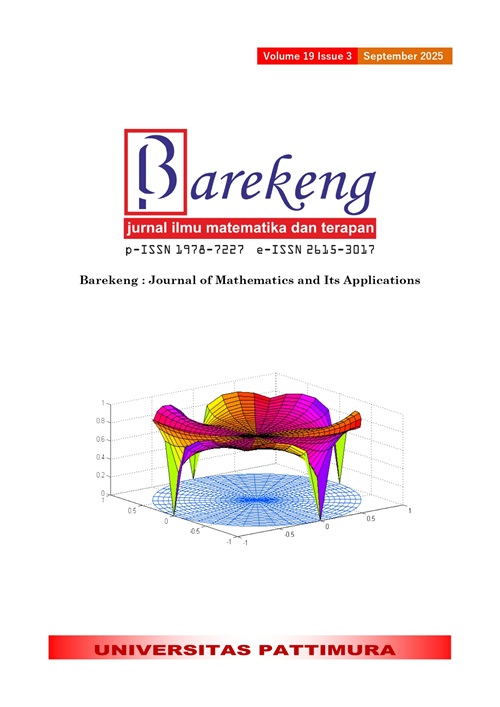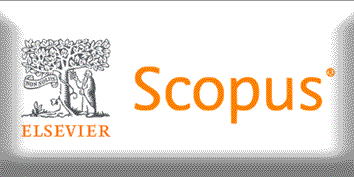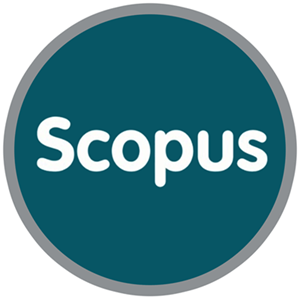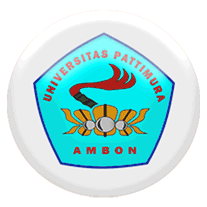IMPLEMENTATION OF PLS-PM IN KNOWING THE FACTORS THAT INFLUENCE THE INCIDENCE OF TYPHOID FEVER IN PATIENTS IN ANUTAPURA PALU HOSPITAL
Abstract
Typhoid fever is a multifactorial disease that has factors that can have an impact, including individual characteristics, maternal knowledge, hygiene, and nutritional status. Data on the incidence of typhoid fever involves many variables that cannot be examined directly (latent variables). This study used secondary data obtained from the medical records of typhoid fever patients at Anutapura Palu Hospital in 2023. One of the statistical methods that can be used to explain the relationship between indicators and latent variables is Partial Least Squares-Path Modeling (PLS-PM). Therefore, this study aims to model the influence of individual characteristics, maternal knowledge, hygiene, and nutritional status on the incidence of typhoid fever in patients at Anutapura Palu Hospital using PLS-PM analysis. The results of the PLS-PM analysis show that individual characteristics and nutritional status have a direct effect on the clinical images, while maternal knowledge and hygiene indirectly affect the clinical images through nutritional status, with a coefficient of determination of 0.828. So, it can be said that nutritional status is able to mediate between individual characteristics, maternal knowledge, and hygiene with the clinical images of typhoid fever.
Downloads
References
T. N. Manalu and J. Rantung, “FAKTOR-FAKTOR YANG MEMPENGARUHI KEJADIAN DEMAM TIFOID,” Jurnal Penelitian Perawat Profesional, vol. 3, no. 4, pp. 837–844, 2021.
S. Zurimi, “PENGARUH PEMBERIAN KOMPRES HANGAT DALAM PEMENUHAN KETIDAKEFEKTIFAN TERMOREGULASI PADA PASIEN DEMAM TYPOID DI RSUD dr. PP MAGRETTI SAUMLAKI”, Global Health Science, vol. 4, no. 3, pp. 131–136, 2019.
R. R. Rahmawati, “FAKTOR RISIKO YANG MEMENGARUHI KEJADIAN DEMAM TIFOID DI WILAYAH KERJA PUSKESMAS BINAKAL KABUPATEN BONDOWOSO,” Medical Technology and Public Health Journal, vol. 4, no. 2, 2020.
S. Khairunnisa, E. M. Hidayat, and R. Herardi, “HUBUNGAN JUMLAH LEUKOSIT DAN PERSENTASE LIMFOSIT TERHADAP TINGKAT DEMAM PADA PASIEN ANAK DENGAN DEMAM TIFOID DI RSUD BUDHI ASIH TAHUN 2018–OKTOBER 2019,” in Seminar Nasional Riset Kedokteran, 2020.
T. Sjahriani, “FAKTOR-FAKTOR YANG BERHUBUNGAN DENGAN KEJADIAN DEMAM TIFOID PADA ANAK DI RSUD DR. H. ABDUL MOELOEK PROVINSI LAMPUNG TAHUN 2015,” Jurnal Medika Malahayati, vol. 2, no. 1, pp. 1–7, 2015.
F. Ulfa and O. W. K. Handayani, “KEJADIAN DEMAM TIFOID DI WILAYAH KERJA PUSKESMAS PAGIYANTEN,” HIGEIA (Journal of Public Health Research and Development), vol. 2, no. 2, pp. 227–238, 2018.
P. A. Lakap, R. Rusijono, and K. Prasetyo, “PENGARUH MOTIVASI DAN SARANA SEKOLAH TERHADAP HASIL BELAJAR SISWA DI KELAS IV SEKOLAH DASAR,” Jurnal Review Pendidikan Dasar: Jurnal Kajian Pendidikan Dan Hasil Penelitian, vol. 6, no. 1, pp. 22–28, 2020.
Eliani, “ANALISIS PENGELOMPOKAN DERAJAT KESEHATAN IBU DAN ANAK DI INDONESIA MENGGUNAKAN STRUCTURAL EQUATION MODELING PARTIAL LEAST SQUARE-PREDICTION ORIENTED SEGMENTATION (SEM PLS-POS),” Tesis, Universitas Tadulako, Palu, 2022.
I. Ghozali and H. Latan, “PARTIAL LEAST SQUARE: KONSEP, TEKNIK DAN APLIKASI SmartPLS 2.0 M3,” Semarang: Badan Penerbit Universitas Diponegoro, pp. 115–126, 2012.
N. Ismatilah and A. Kudus, “FAKTOR-FAKTOR YANG MEMENGARUHI KEPUASAN KONSUMEN PENGGUNA JASA TRANSPORTASI OJEK ONLINE DENGAN PARTIAL LEAST SQUARE PATH MODELING (PLS-PM),” in Bandung Conference Series: Statistics, 2022, pp. 332–342.
ARLENE HENNY HIARIEY, “ANALISIS PATH MODELING SEGMENTATION PARTIAL LEAST SQUARE (PATHMOX-PLS) PADA GAMBARAN KLINIS PASIEN HIV/AIDS,” Tesis, INSTITUT TEKNOLOGI SEPULUH NOPEMBER, Surabaya, 2018.
DHAMAS AYU ARDHA, “PENERAPAN PARTIAL LEAST SQUARE-PATH MODELING (PLS-PM) UNTUK MENGANALISIS FAKTOR-FAKTOR YANG BERPENGARUH TERHADAP LOYALITAS NASABAH”, Tesis, UNIVERSITAS BRAWIJAYA, Malang, 2017.
I. Ghozali, STRUCTURAL EQUATION MODELING: METODE ALTERNATIF DENGAN PARTIAL LEAST SQUARE (Pls). Badan Penerbit Universitas Diponegoro, 2008.
SYARAH PUTRI YUTIKA, “PENGARUH DAN PENGELOMPOKAN PEMBANGUNAN MANUSIA TERHADAP KETERLANTARAN LANSIA DI INDONESIA DENGAN STRUCTURAL EQUATION MODELING PARTIAL LEAST SQUARE (SEM-PLS) DAN PLS PREDICTION ORIENTED SEGMENTATION (PLS-POS),” Tesis, INSTITUT TEKNOLOGI SEPULUH NOPEMBER, Surabaya, 2017.
A. E. Sujianto, “APLIKASI STATISTIK DENGAN SPSS 16.0,” 2009.
Tjakrawal, F. K. (2014). LATENT-PATH MODELING DENGAN PARTIAL LEAST SQUARE GUNA MEMPREDIKSI PENGARUH FAKTOR-FAKTOR ISSU LINGKUNGAN TERHADAP SISTEM PENGENDALIAN MANAJEMEN LINGKUNGAN. 3rd Economics & Business Research Festival, 1885-1899.
G. Ramaningrum, H. D. Anggraheny, & T. P. Putri, “FAKTOR-FAKTOR YANG MEMPENGARUHI KEJADIAN DEMAM TIFOID PADA ANAK DI RSUD TUGUREJO SEMARANG”, Jurnal Unimus, pp. 1-8, 2017.
D. Nurdiansyah,. et, al., “IMPLEMENTATION OF THE SEM-PLS APPROACH TO ANALYZE THE IMPACT OF SOCIAL AID AND APBD ON POVERTY IN THE BOJONEGORO DISTRICT”, BAREKENG:Journal of Mathematics and Its Application, Vol. 19, pp. 525-536, 2025.
A. Purwanto and Rusmining, “PLS-SEM ANALYSIS OF SOCIAL ENVIRONMENT’S IMPACT ON MATHEMATICS DIGITAL LITERACY”, BAREKENG:Journal of Mathematics and Its Application, Vol. 18, Issue. 3, pp. 1527-1538, 2024.
N. N. Surayya and T. Sirait, “DETERMINANTR MODELING OF UNDERNUTRITION IN TODDLERS IN ACEH PROVINCE: A PLS-SEM APPROACH”, BAREKENG:Journal of Mathematics and Its Application, Vol. 18, Issue. 3, pp. 1853-1864, 2024.
Copyright (c) 2025 Virga Damayanti, Fadjryani Fadjryani, Iman Setiawan

This work is licensed under a Creative Commons Attribution-ShareAlike 4.0 International License.
Authors who publish with this Journal agree to the following terms:
- Author retain copyright and grant the journal right of first publication with the work simultaneously licensed under a creative commons attribution license that allow others to share the work within an acknowledgement of the work’s authorship and initial publication of this journal.
- Authors are able to enter into separate, additional contractual arrangement for the non-exclusive distribution of the journal’s published version of the work (e.g. acknowledgement of its initial publication in this journal).
- Authors are permitted and encouraged to post their work online (e.g. in institutional repositories or on their websites) prior to and during the submission process, as it can lead to productive exchanges, as well as earlier and greater citation of published works.






1.gif)



